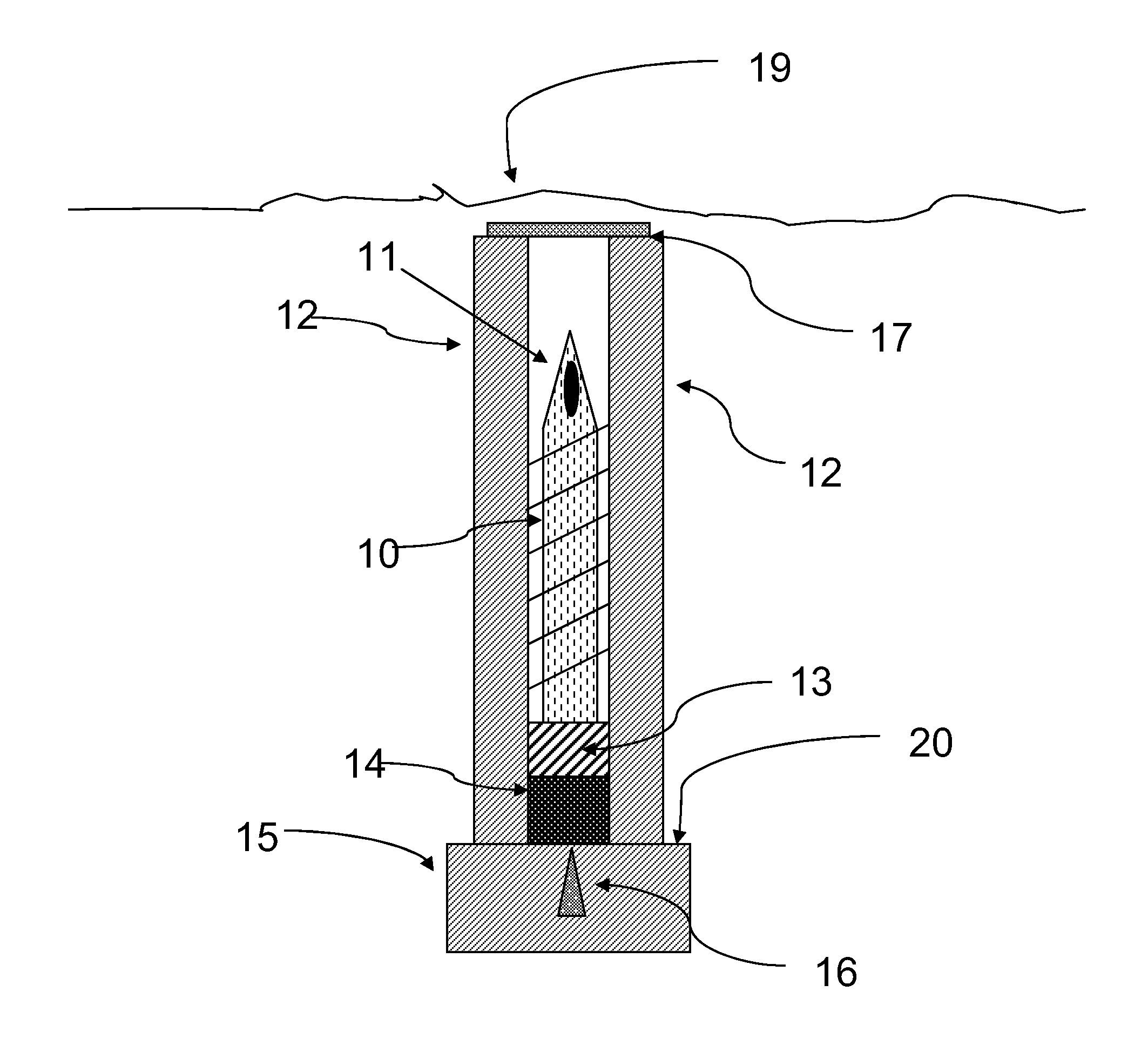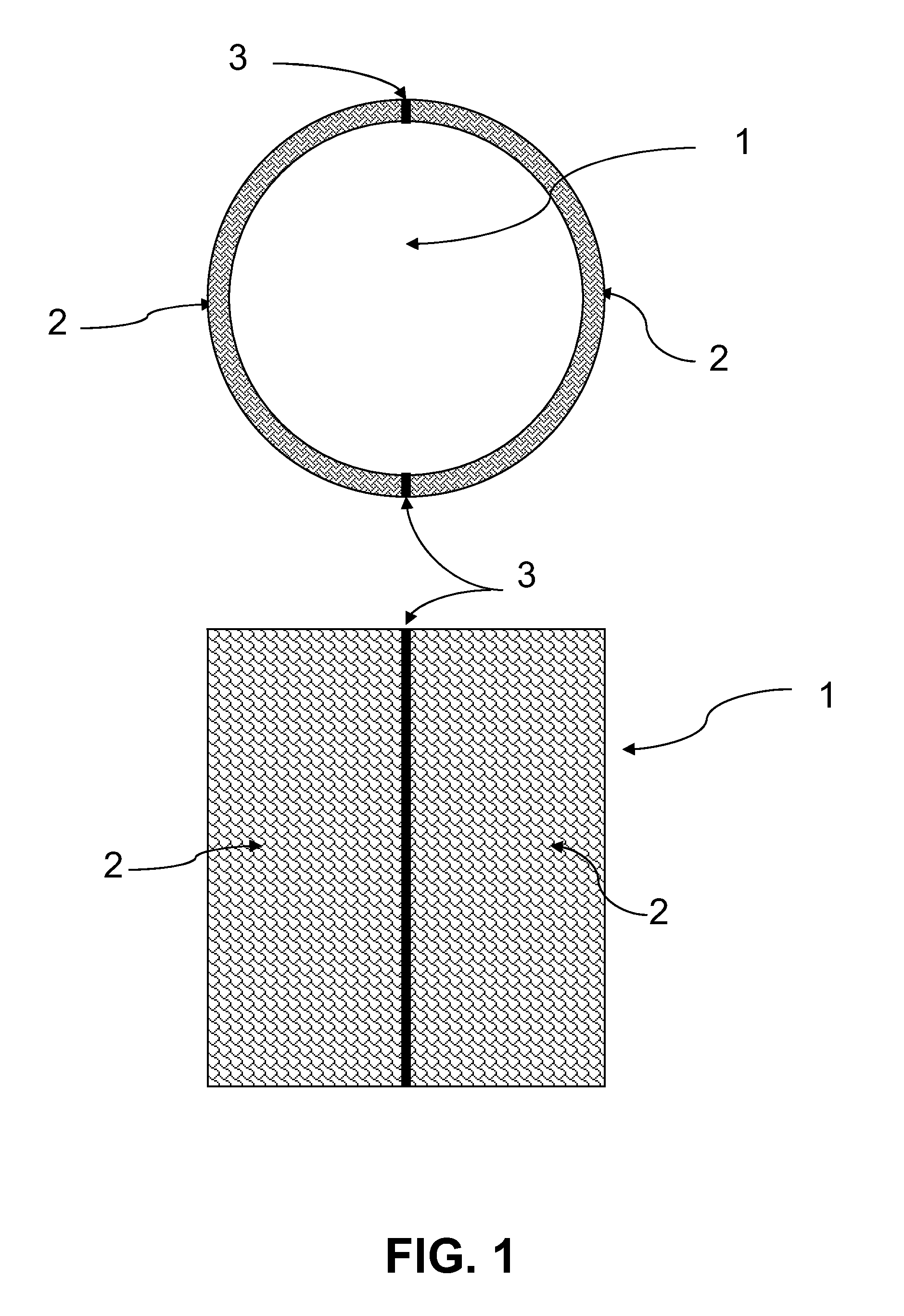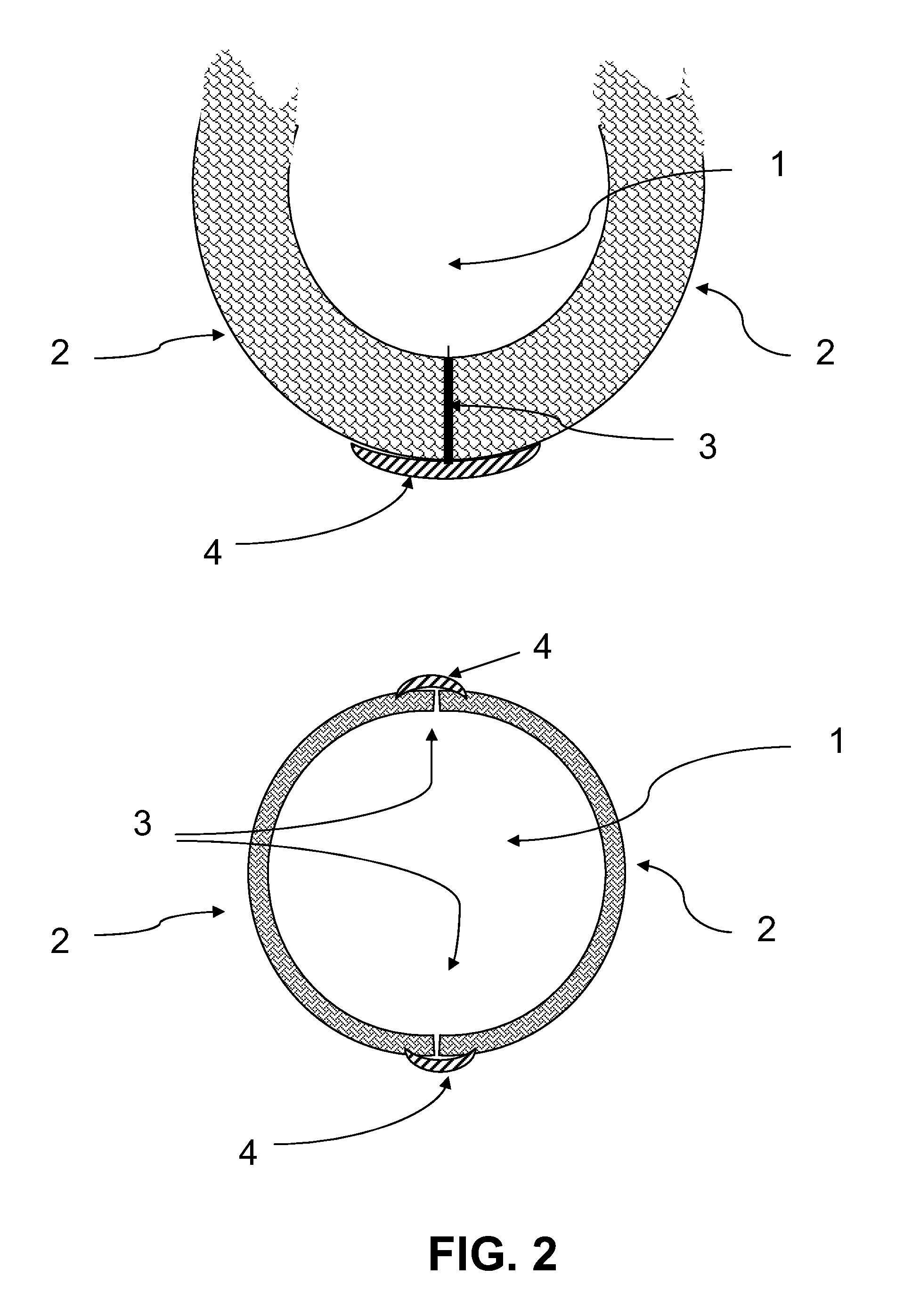Area Denial Device
a denial device and area technology, applied in the field of defense means, can solve the problems of unexploded munitions posing a serious threat to military and civilian personnel, too dangerous to handle or transport, and may be neutralized, so as to achieve the effect of avoiding significant injuries, and reducing the cost of munitions
- Summary
- Abstract
- Description
- Claims
- Application Information
AI Technical Summary
Benefits of technology
Problems solved by technology
Method used
Image
Examples
Embodiment Construction
[0003]The following description of preferred embodiments will provide a summary description of the present invention.
[0004]Explosive anti-personnel landmines cause thousands of deaths and severe, life limiting injuries amongst insurgents and civilians every year. It is estimated that over 20,000 civilians, including many children, are permanently maimed or killed a year by anti-personnel landmines. As a result of wide-spread international concern about the high number of civilian injuries and deaths from these mines, there is general agreement among many Governments that it is necessary to restrict and eliminate these weapons. This has resulted in an international treaty known as the Ottawa Convention to ban explosive Anti-Personnel Landmines.
[0005]The United States is not currently a signatory party to this treaty, and the United States military and most other military forces see the continuing need to deny enemy access to areas or to delay access until troops can occupy and mount ...
PUM
 Login to View More
Login to View More Abstract
Description
Claims
Application Information
 Login to View More
Login to View More - R&D
- Intellectual Property
- Life Sciences
- Materials
- Tech Scout
- Unparalleled Data Quality
- Higher Quality Content
- 60% Fewer Hallucinations
Browse by: Latest US Patents, China's latest patents, Technical Efficacy Thesaurus, Application Domain, Technology Topic, Popular Technical Reports.
© 2025 PatSnap. All rights reserved.Legal|Privacy policy|Modern Slavery Act Transparency Statement|Sitemap|About US| Contact US: help@patsnap.com



